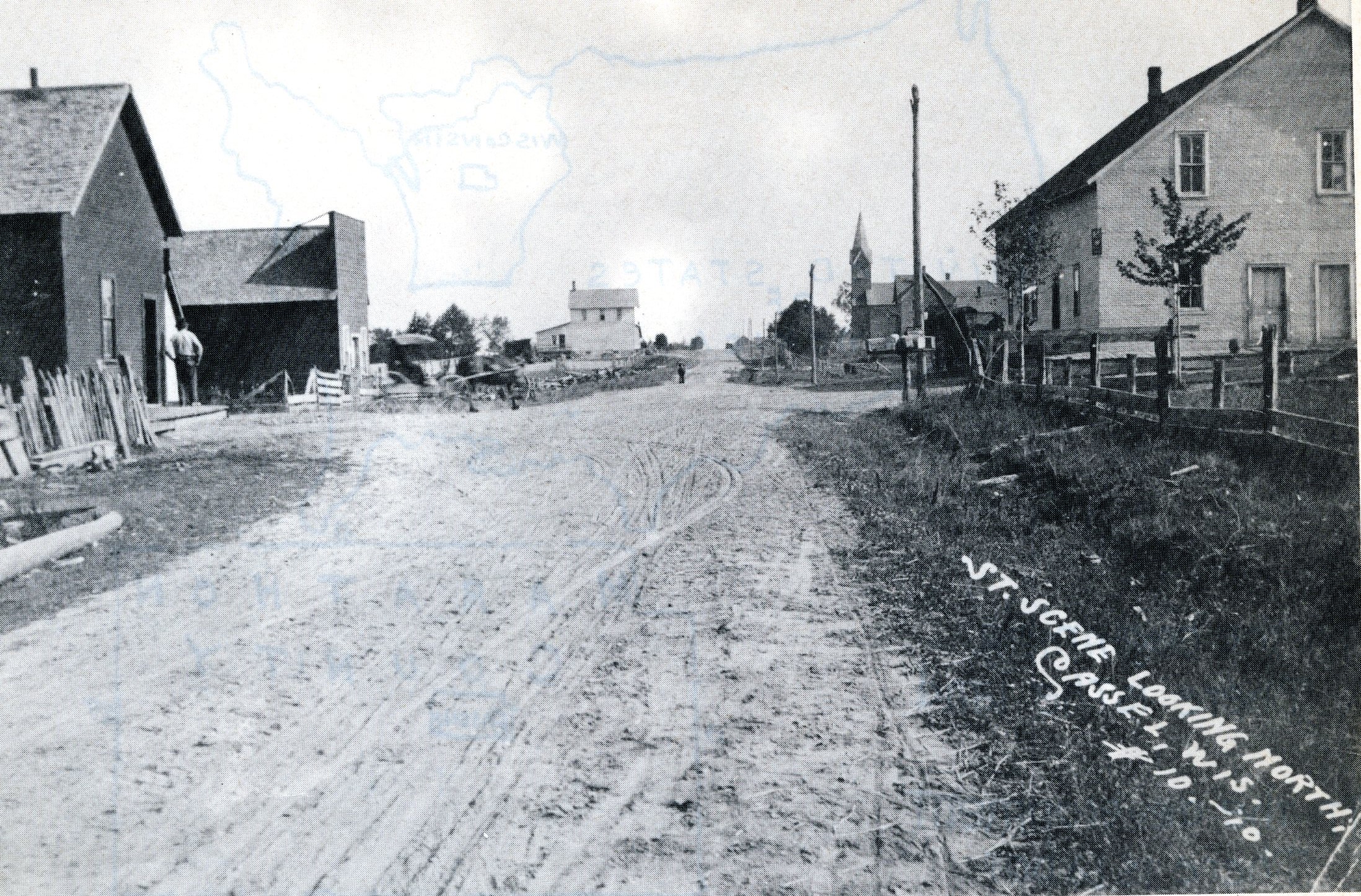Search our Places Database
Cassel, Township of
Return To List of Locations | Back to Search
For more information on this location, please contact our research library.

Author:
Mary Moltzan
Location:
T. 28 N. - R. 5 E.
Formallized:
November 12, 1891.
Background:
Population: 1905-1,128 plus part of Marathon City, 2000-847 plus part of Marathon City.
The only two communities in the township were the eastern portion of Edgar and the western portion of Marathon City. This town was originally part of the Town of Marathon. It was settled by the Pittsburg Settlers's Club. When set apart as a township, it was numerically as strong as the other half.
First Public Official:
John Werner, Chairman
About The Post Office:
No P.O.s were ever established in the township. The nearest were Edgar and Marathon City. Rural delivery began in 1901 with Joe Muschinski as the first rural mail carrier.
Railroad:
The Milwaukee, Lake Shore & Western (later part of the C&NW) RR ran through the northern part of the township from Edgar to Marathon City as early as 1891.
See Township of Wien.
Churches:
1. Sacred Heart Catholic Church. The first frame building was built in 1886 by mainly Polish settlers in the area. It was replaced by a brick church in 1905 on the same site in the SE corner of Section 23. The Sacred Heart School and Convent were built in 1910.
Schools:
1. School #2, called Buchanan School was built in 1891 in Section 36. Presumed closed in 1931.
2. School #3, Taylor School in Section 21 closed in 1939.
3. School #4, Filmore School was in Section 28.
4. School #5, Pierce School in Section 18 was built in 1901 and closed in 1945.
5. Daisy Dell School reportedly in Section 3.
6. Sacred Heart Catholic School was built in 1910 near the church and closed in 1970.
Business:
Tavern and dance hall built by Theodore Lepak
Stores: 1. One owned by Martin Kalamajka; 2. One later by Stanley Greta; 3. Cassel Store owned by Carl Lepak
Blacksmith shop operated on Lepak's corner
Rib River Ballroom
Industry:
Cheese factories - Cassel Co-op Cheese Factory was started by Joseph Goldbach in the early 1900s. Another was the Cassel Garden Farmers Co-op Cheese Co. built in 1910 by John Seubert. Some others were Mayflower Cheese Co., Town of Cassel Cheese and Butter Co, and Wisconsin Dairies Cooperative.
Sawmill owned by A. Bauman doing custom sawing only
Farming:
Farming was the major enterprise of Cassel Township composed largely of dairy farms amid rich farmland. Land was cleared as the tree stumps were removed. In the meantime, root crops, such as beets, turnips, and pumpkins, were planted in and around the stumps which helped to provide food for man and animal. Hunting and killing wild animals provided the meat. When cows were brought here at a later date, they were left to roam at large. If feed ran out towards spring, cows ate the shoots and leaves from the trees as they were cut down. Wheat, barley, rye, and oats were gradually seeded.
Before the revolution in farm machinery, farmers relied almost entirely on human labor to plant, cultivate, and harvest crops. Horses had replaced some of the oxen by 1870. By the end of the 19th century, most implements had reached their maximum capacity for use with horses because of their limitations in strength and endurance.
Stories:
Early settlers gathered many wild plants, herbs, and greens for food and medicinal purposes from woods and fields.
For medicinal use: cow slips and mustard green leaves for tea; wild geranium for diarrhea, mullen for earache
For food purposes: wild dandelions for salad greens
Animals were used for their food value as well as other uses. For example, skunk and goose fat was rendered and used for cold massage.
Food preservation was important. Some of the meat was fried and packed in crocks, and hard lard was poured over to seal and keep air out. It was to be enjoyed in the summer as freezers weren't yet available. Beef was hung, wrapped in cloth, and stored from the barn eaves to keep rodents and insects away in winter. Much canning was done for preserving different vegetables and fruits in season and used in the winter as very few trips were made to the store.



